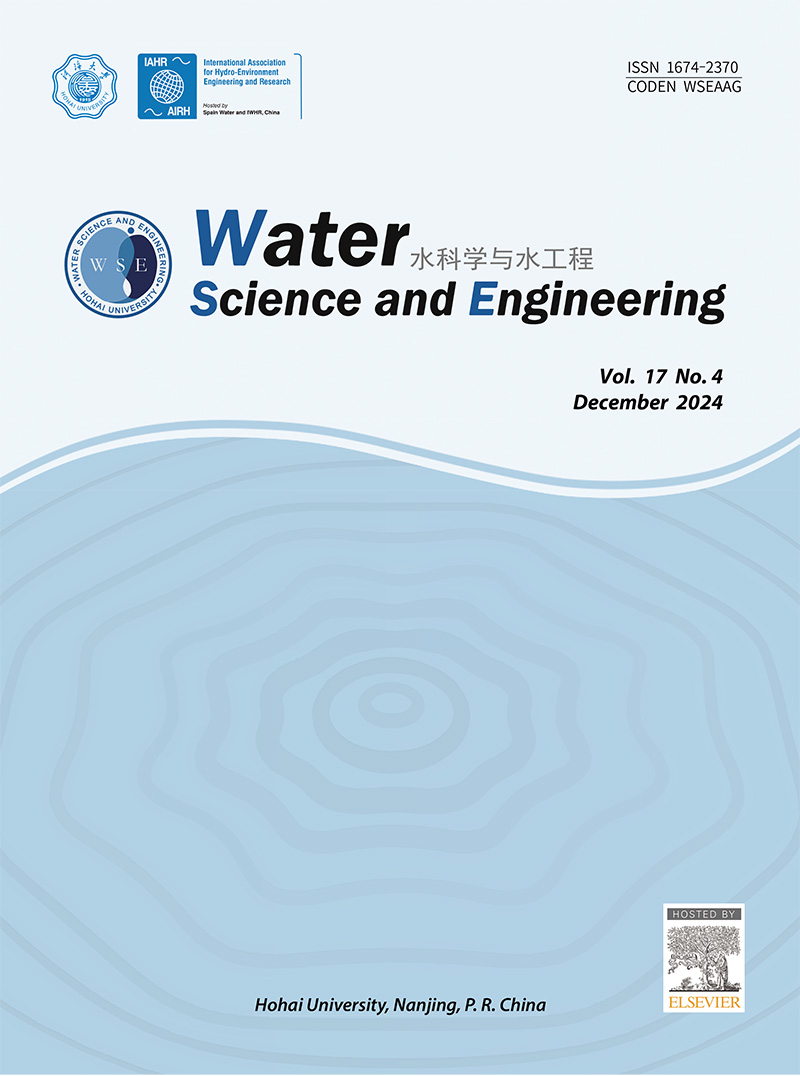Synthesis of trimethoprim vanillin anchored conjugate imprinted polymers for removal of bromocresol green and malachite green from aqueous media
IF 4.3
Q1 WATER RESOURCES
引用次数: 0
Abstract
Bromocresol green (BCG) and malachite green (MG) are water-soluble toxic organic dyes with adverse health and environmental implications. This study presented a conjugate imprinted adsorbent (CIA) synthesized by incorporating trimethoprim vanillin ligand into a highly crosslinked polymer, designed for the efficient removal of BCG and MG from wastewater. Characterization of CIA involved X-ray powder diffraction, Fourier transform infrared, and scanning electron microscopic analyses. Batch adsorption processes were conducted to evaluate the adsorption characteristics of CIA, with focuses on the effects of contact time, initial dye concentration, pH, and temperature. The molecularly imprinted polymers (MIPs) achieved removal efficiencies of 99.27% and 98.99% at equilibrium for BCG and MG adsorption, respectively. The non-imprinted polymers (NIPs) demonstrated BCG and MG adsorption efficiencies of 51.52% and 62.90% at equilibrium, respectively. Kinetic and isotherm models were employed to elucidate the BCG and MG adsorption mechanisms. The thermodynamic results indicated non-spontaneous and spontaneous reactions for BCG and MG adsorption on MIPs under the examined temperature conditions. The adsorbent exhibited sustained high removal efficiency through five reuse cycles, with no apparent reduction in adsorption performance. Validation of the adsorbent using real textile wastewater samples achieved BCG and MG removal efficiencies of 85.5%–87.5%. The adsorbent outperformed previously reported materials in BCG and MG adsorption. The synthesized CIA is a promising adsorbent for BCG and MG dye removal, contributing to water sustainability.
合成用于去除水介质中溴甲酚绿和孔雀石绿的三甲氧苄啶香兰素锚定共轭印迹聚合物
溴甲酚绿(BCG)和孔雀石绿(MG)是水溶性有毒有机染料,对健康和环境有不良影响。采用高交联聚合物与甲氧苄氨苄香兰素配体合成了一种共轭印迹吸附剂(CIA),用于废水中BCG和MG的高效去除。CIA的表征包括x射线粉末衍射、傅里叶变换红外和扫描电镜分析。采用间歇式吸附工艺评价了CIA的吸附特性,重点考察了接触时间、初始染料浓度、pH和温度对CIA吸附特性的影响。分子印迹聚合物(MIPs)吸附BCG和MG的效率分别达到99.27%和98.99%。非印迹聚合物(NIPs)对BCG和MG的吸附效率分别为51.52%和62.90%。采用动力学模型和等温模型对BCG和MG的吸附机理进行了研究。热力学结果表明,在所考察的温度条件下,介介菌和MG在MIPs上的吸附存在非自发反应和自发反应。经过5次重复使用,吸附剂表现出持续的高去除效率,吸附性能没有明显下降。通过实际纺织废水样品验证,该吸附剂对BCG和MG的去除率为85.5% ~ 87.5%。该吸附剂在BCG和MG吸附方面优于先前报道的材料。合成的CIA是一种很有前途的吸附BCG和MG染料,有助于水的可持续性。
本文章由计算机程序翻译,如有差异,请以英文原文为准。
求助全文
约1分钟内获得全文
求助全文
来源期刊

Water science and engineering
WATER RESOURCES-
CiteScore
6.60
自引率
5.00%
发文量
573
审稿时长
50 weeks
期刊介绍:
Water Science and Engineering journal is an international, peer-reviewed research publication covering new concepts, theories, methods, and techniques related to water issues. The journal aims to publish research that helps advance the theoretical and practical understanding of water resources, aquatic environment, aquatic ecology, and water engineering, with emphases placed on the innovation and applicability of science and technology in large-scale hydropower project construction, large river and lake regulation, inter-basin water transfer, hydroelectric energy development, ecological restoration, the development of new materials, and sustainable utilization of water resources.
 求助内容:
求助内容: 应助结果提醒方式:
应助结果提醒方式:


